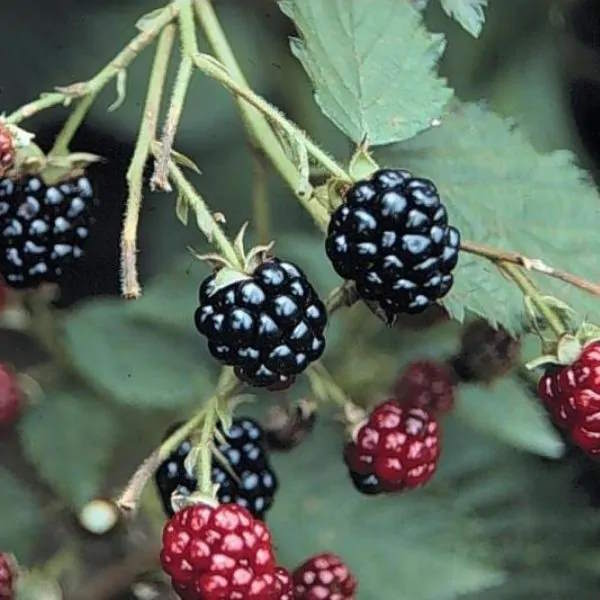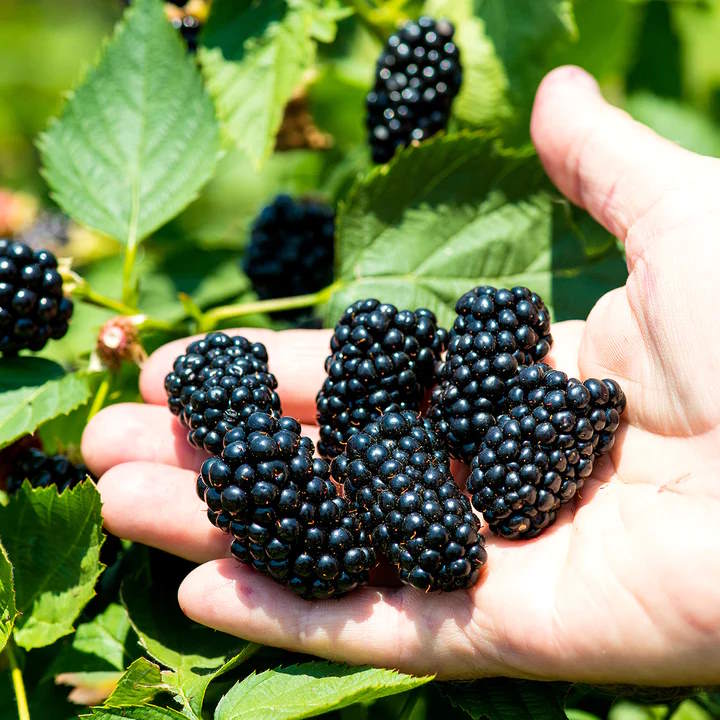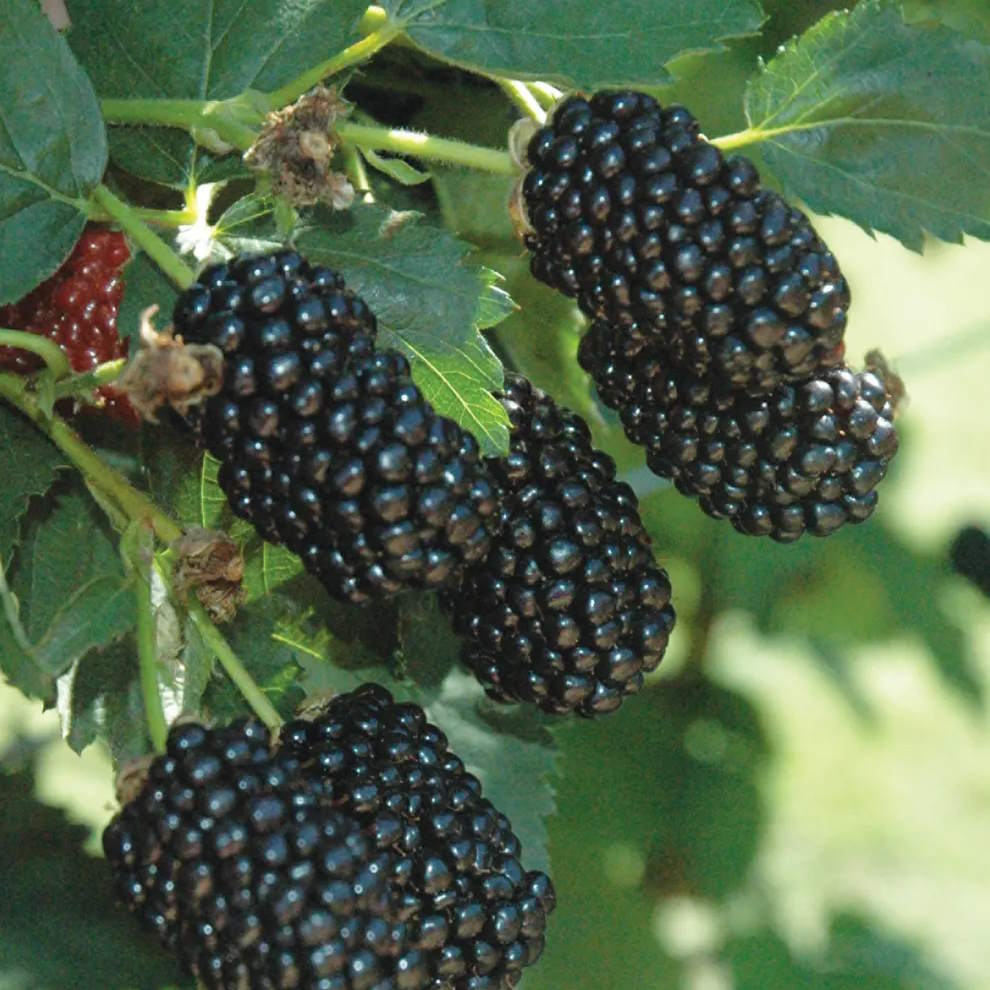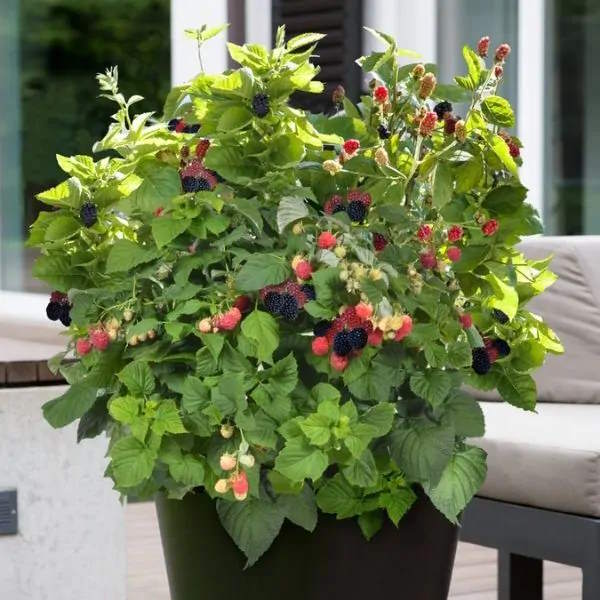How to grow blackberries at home – for simple harvests of sweet summer fruits
If you fancy a prolific crop of blackberries every year, see our guide to growing these popular fruits
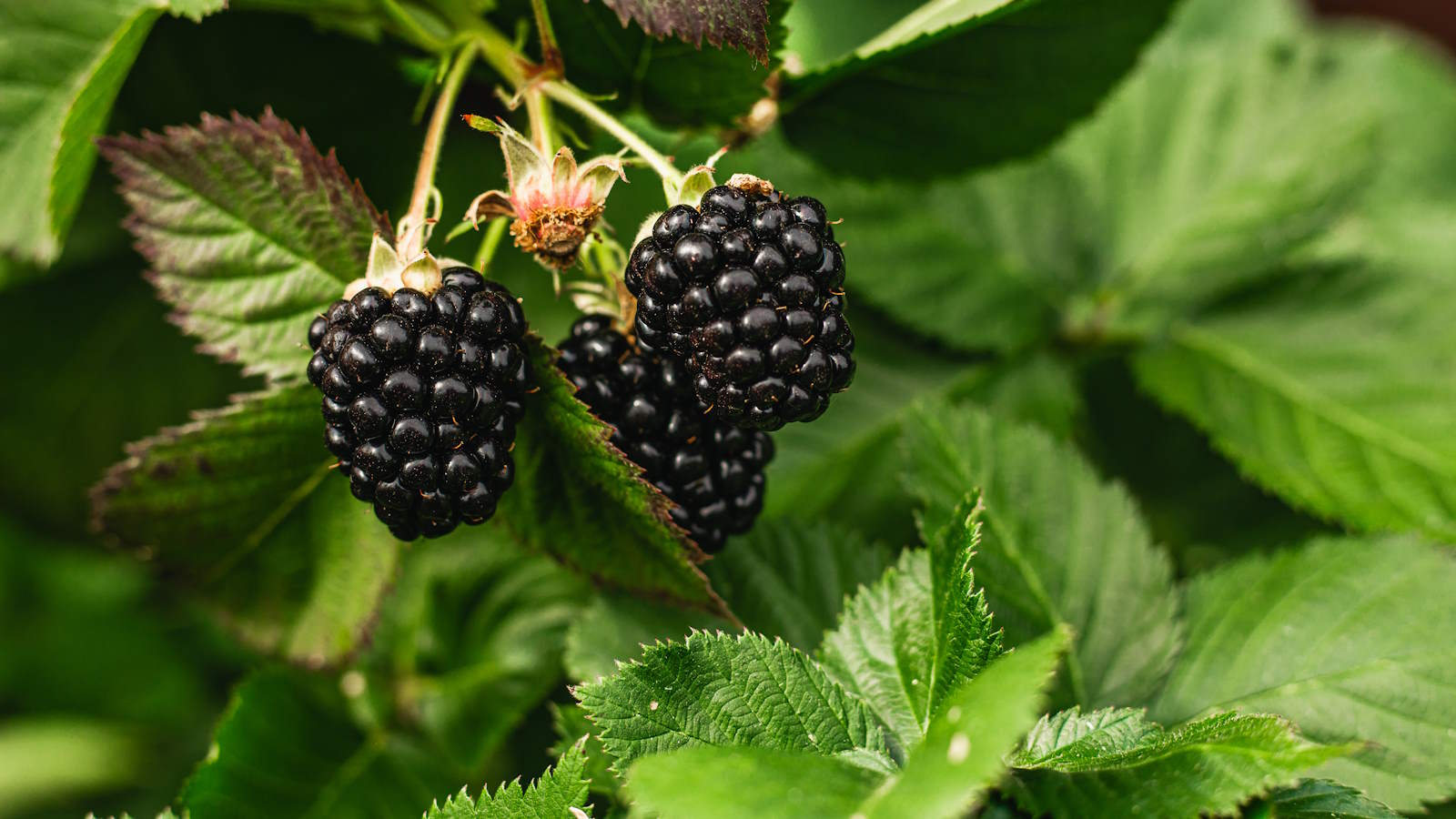

Blackberries are fruits often seen growing rampantly in the wild, though there are many types you can cultivate at home. They are simple to grow and the fruits you can get on varieties bred to grow in the backyard are sweeter than those commonly foraged.
The native plant is hardy in US hardiness zones 5-9 and produces white or pink flowers in spring followed by juicy berries that can be picked throughout summer and into fall, depending on the variety.
Blackberries are readily available from stores or online and are one of the best brambles you can add to any backyard. Once established they can provide an abundance of fruits and do not require lots of maintenance, aside from training and pruning blackberries annually.
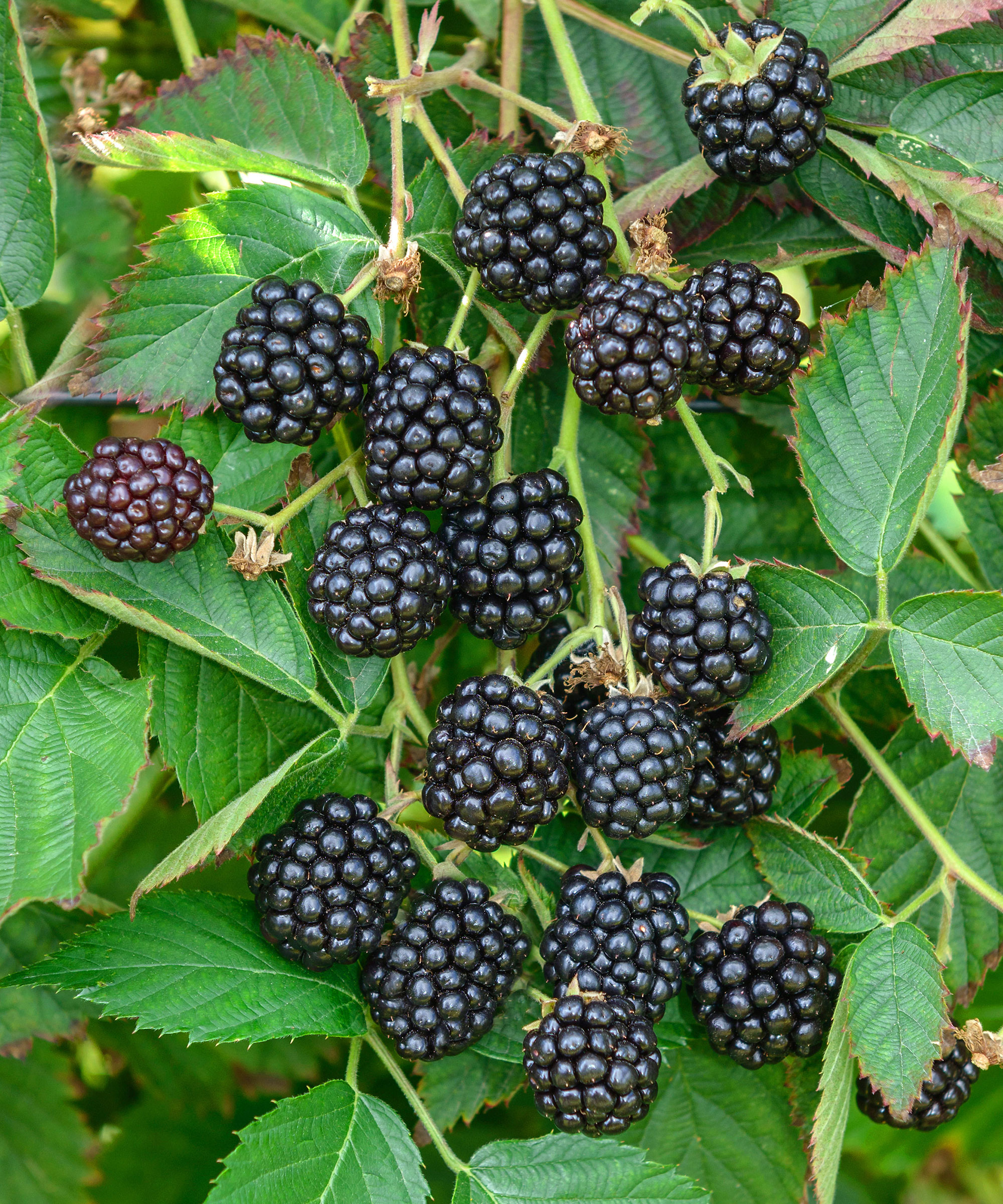
Blackberries are a superfood high in vitamins and antioxidants
Types of blackberries to grow at home
There are many varieties of blackberries to choose from, coming in different sizes – from large vigorous plants down to modern compact varieties ideal for small backyard ideas. Different varieties can also have varying cropping times, from early summer into fall, and there are also thornless types to make pruning and picking less of a chore. When looking to purchase blackberries, you will often see them grouped depending on their growth habit and whether they have thorns.
Where to plant blackberries
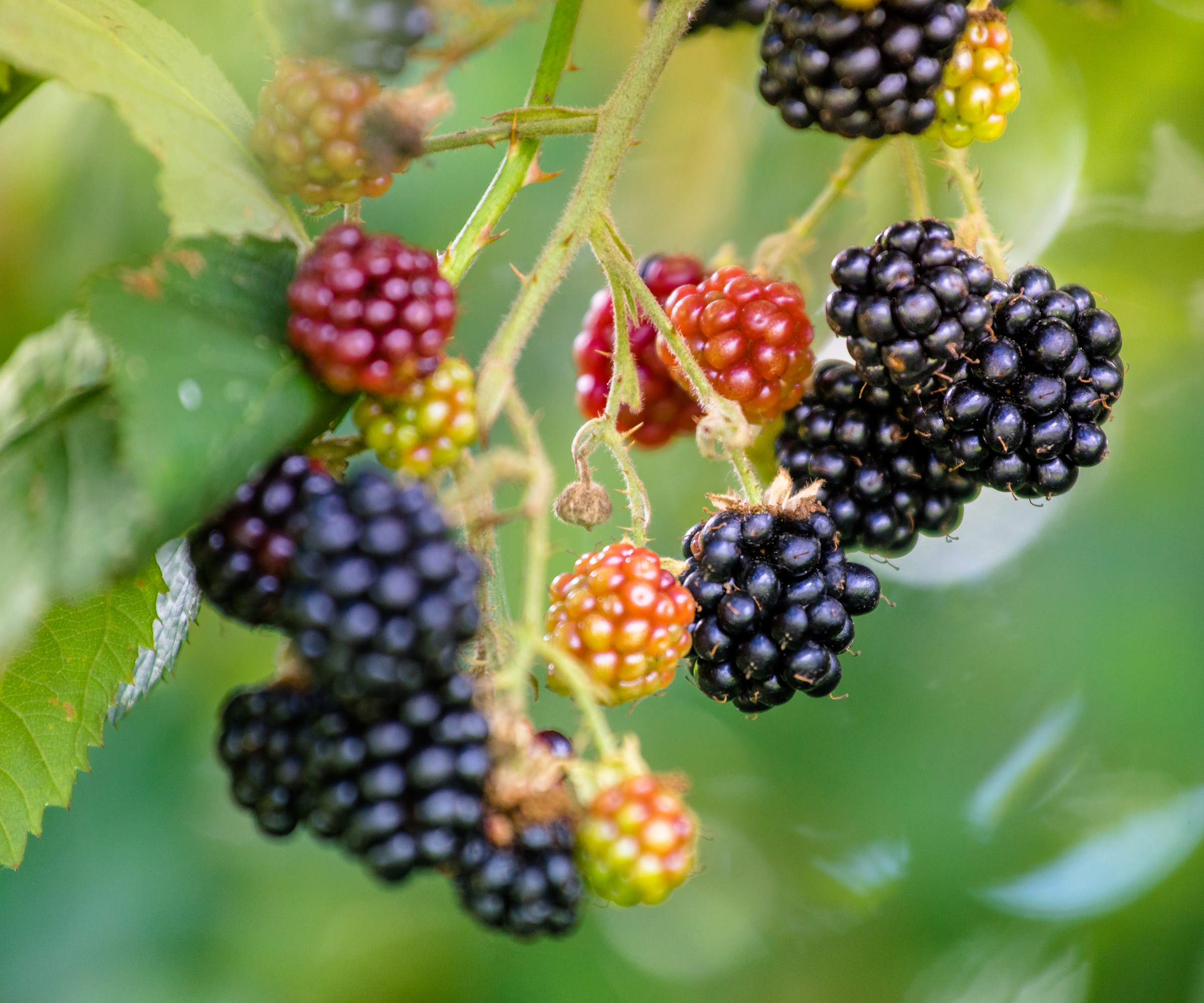
Blackberries thrive growing in lots of sun
Blackberries prosper in the sun and an ideal location would get at least six hours of direct sunlight per day. The more sunlight you can provide the plants, the better your crop will be. In hotter US hardiness zones, blackberries can tolerate some shade, but elsewhere you want to provide them a spot in full sun.
The plants are going to live in their location for many years and want a soil type that is fertile and well-draining. Do not plant blackberries in soil that gets waterlogged in winter. There are ways to adjust your soil to make it more suitable for blackberries if required. Jessica Mercer from Plant Addicts recommends: ‘Amend heavy clay or sandy soils with several inches of high-quality compost to improve the texture and fertility of the soil. The ideal soil pH is between 5.6 to 6.5. You may need to add an acidifying product like aluminum sulfate to alkaline soil.’
Take picking the crop into consideration when planning the location. The plants are vigorous and some varieties can get very large, up to 10 feet wide, so you want to ensure there is space to walk around the blackberry plants to harvest the berries.
Design expertise in your inbox – from inspiring decorating ideas and beautiful celebrity homes to practical gardening advice and shopping round-ups.

Jessica Mercer, PhD, is the Senior Content Marketing Coordinator for Plant Addicts. As a plant collector, Jessica enjoys growing many different plants and learning about the best culture practices for each. She uses her science background to research interesting plant topics and present the information to other gardeners for Plant Addicts.
How to plant blackberries
Blackberry plants are often available to purchase from garden centers, nurseries, or online retailers as either bare-root or container-grown plants. Bare-root plants are usually available during dormancy from fall to early spring, while blackberries grown in containers are available year-round.
The ideal time to plant bare-root blackberries and container-grown blackberries comes in early spring – when the plants are dormant, the weather is cool, and the ground tends to be moist. Planting in fall is possible in warmer climates, but spring is recommended as cold winter temperatures can damage newly planted shrubs.
Plant container-grown plants into large holes at the same height they were in the pot, while a hole for bare-root blackberries needs to be big enough to accommodate the root system and the roots want to be around 2-3 inches below the surface. Backfill the soil into the holes and gently press it down so the blackberry is firmly planted, then water well.
If you are planting several blackberries in rows, varieties with a trailing habit are best planted 6-8 feet apart while erect cultivars should be planted closer together, at around 3-4 feet between plants.
How to grow blackberries - caring for bushes
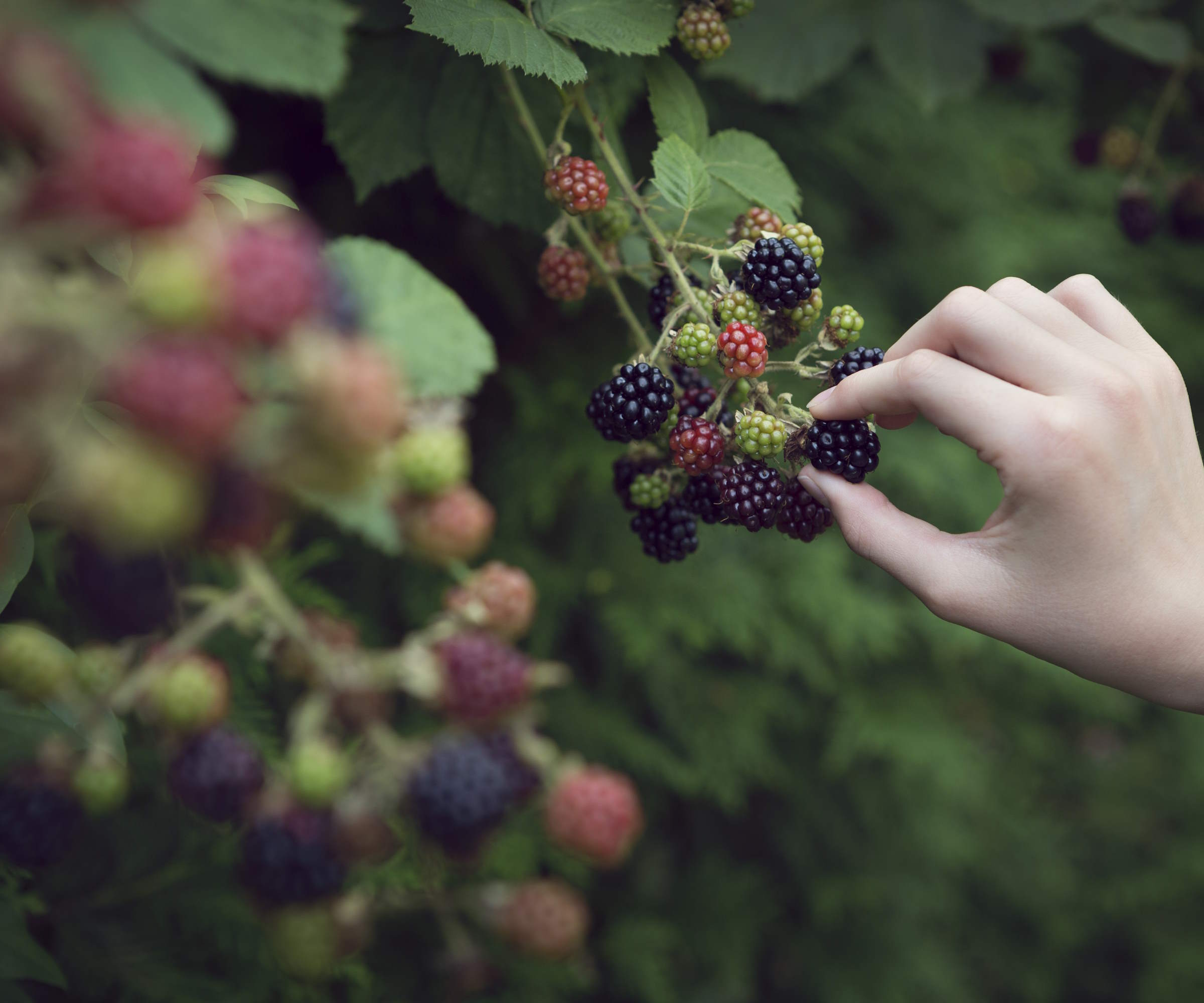
Blackberries require little maintenance once established
Blackberries are vigorous and fast-growing plants that will likely need a trellis or structure to be trained to grow on. Erect types can support themselves, but trailing blackberries need support to keep them under control and growing upright, while it can also help to make harvesting easier.
Watering is a key maintenance task, especially during the plant’s first season. Keep a regular eye on when to water plants and especially take care to keep the soil moist in summer.
‘Blackberries need regular water to produce a high fruit yield. Provide 1-1.5 inches of water per week, accounting for rainfall,’ recommends Jessica Mercer. ‘Watering is most critical while the fruits are forming. Consider installing drip irrigation to make watering easier and reduce the amount of moisture lost to overspray and evaporation.’
The plants will benefit from a feed with a balanced fertilizer – one with an NPK ratio of 10-10-10 - in early spring. One example of such a fertilizer is this all-purpose feed available at Amazon. Mulching should also be high on your to-do list when growing blackberries. Applying a layer of mulch each spring after feeding will help the soil retain moisture and suppress competition from weeds.
Samuel Davis, CEO of London Gardeners advises that ‘regular pruning is crucial’ to healthy blackberries and getting a great harvest of fruits. He says: ‘Remove dead or diseased canes and thin the plants to allow air circulation and sunlight penetration.’
When pruning blackberries, remove the old fruited stems at the base after harvesting each year. The stems themselves are biennial and once they have fruited they are done producing and want to be cut all the way back to ground level in late fall.
How to harvest blackberries
Blackberries are ready to harvest from mid-summer to early fall, depending on the variety and climate. The berries ripen over three weeks or more and it can be beneficial to use netting to protect the fruits from birds as they develop.
Ripe fruits are fully black, plump and juicy. They will detach easily from the plant when they are ripe and should be carefully picked. Harvest the fruits regularly as they ripen to get them at the supreme sweetness and they will stay fresh for a few days after picking. The fruits can be frozen or turned into jams or jellies.
How to grow blackberries in a pot
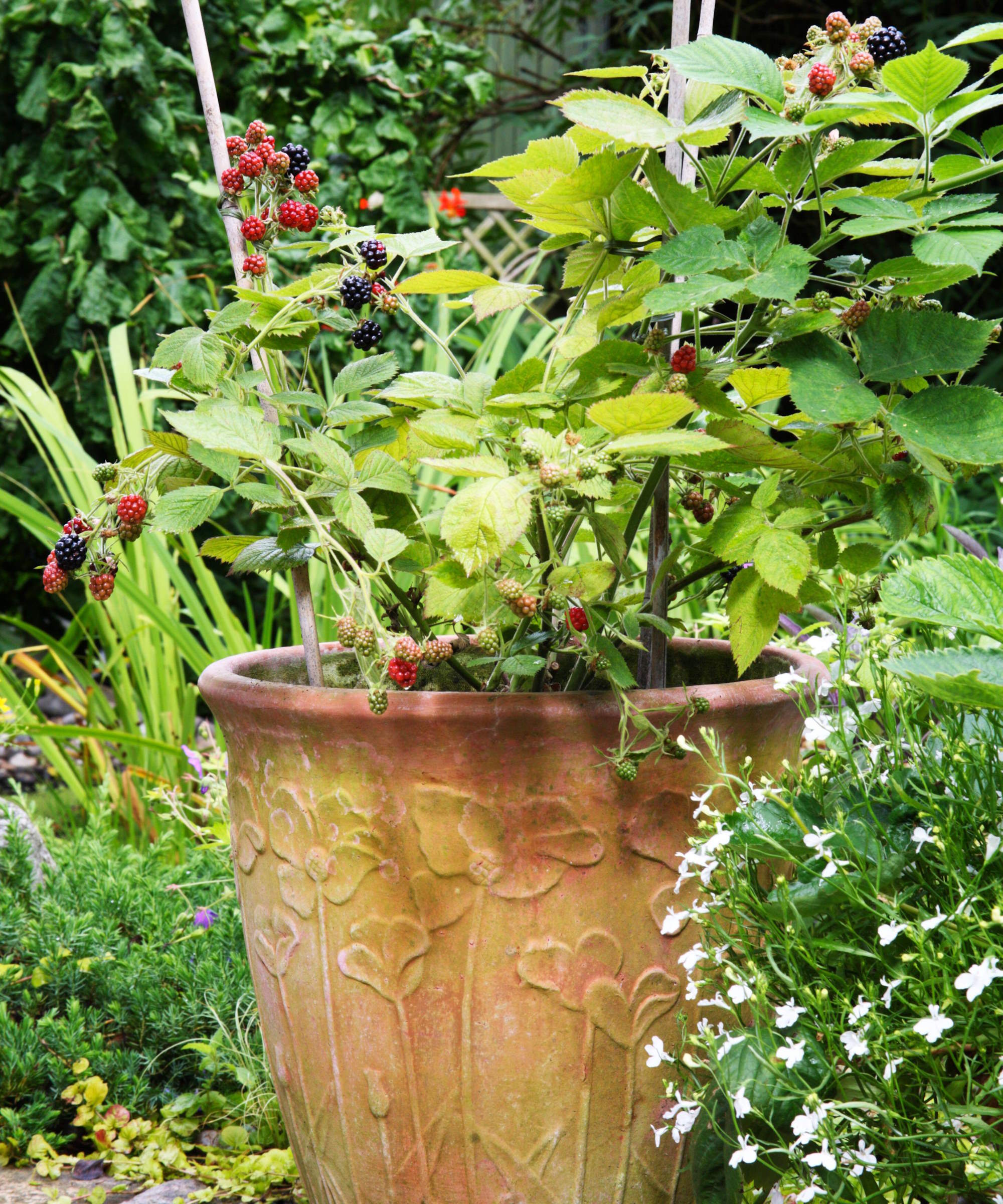
Blackberries can be grown on decks or patios in containers
Blackberries can be grown in large pots in a container garden if you want to grow the crop on a patio or deck. Smaller compact varieties are best suited, however, all varieties can be grown in pots as container-growing will restrict their growth.
Choose a large pot at least 18 inches wide with good holes in the bottom for drainage. Fill the container with a well-draining potting mix and plant your chosen blackberry. Place it in a sunny spot in your backyard and water regularly - plants grown in pots will need more frequent watering than when grown in the ground. Check the moisture levels a few inches under the surface when watering plants in a container to avoid over-watering and risk the roots rotting.
How to grow blackberries from seed
Blackberries are normally grown from purchased plants or cuttings, however, it is possible to grow blackberries from seed. The seeds need to go through a period of cold stratification before sowing and this can be done in a refrigerator for around 6-8 weeks.
Sow seeds in trays or small pots filled with a good potting mix for starting seeds. Sow them 1/4 inch deep and lightly cover with more compost or vermiculite. The seeds should be kept moist at temperatures around 70°F to ensure good germination.
The seedlings can be transplanted into larger individual pots once they are large enough to handle and continue to be grown in a sunny spot. The young blackberry bushes can be planted out into their final position in the ground in spring, once the risk of frost has passed.
How to grow blackberries from cuttings
You can take plant cuttings from blackberries to get more bushes for your backyard. Stem cuttings are the best method for guaranteed success and can be done quickly and simply. Always use clean and sharp garden tools to take cuttings, as it would be a cuttings mistake to attempt to propagate using dirty and blunt instruments.
The time to take the stem cuttings is towards the end of spring and take around 4-6 inch cuttings from the end of healthy stems. Place these into pots filled with a good well-draining potting mix and keep them in a spot out of direct sunlight. Mist the cuttings regularly and roots should develop within 4 weeks.
Blackberries can also be propagated from root cuttings in fall, or by tip layering in early fall – where you pin the end of a stem to the ground and allow it to root over winter.
FAQs
Can you grow blackberries from a blackberry?
It is possible to grow blackberries from a blackberry bought from the store or picked off an existing bush. However, growing blackberries from seed is a slow process and, if you have existing plants, growing new ones from cuttings would be recommended. The risk of attempting to grow blackberries from store-bought fruits is that you do not know the variety or genes of the seeds – there is no guarantee you would get the same fruits on any plant that grew. Some fruits are treated with chemicals to inhibit sprouting and the seeds could also carry diseases.
Modern varieties of soft fruit now mean there are more options for compact plants to get harvests in pots on a deck, patio, or balcony. For example, you can get specially bred varieties to grow raspberries in pots to get lots of delicious fruits in small spaces

Drew’s passion for gardening started with growing vegetables and salad in raised beds in a small urban terrace garden. He has worked as a professional gardener in historic gardens and specialises in growing vegetables, fruit, herbs, and cut flowers as a kitchen gardener. That passion for growing extends to being an allotmenteer, garden blogger, and producing how-to gardening guides for websites. Drew was shortlisted for the New Talent of the Year award at the 2023 Garden Media Guild Awards.
